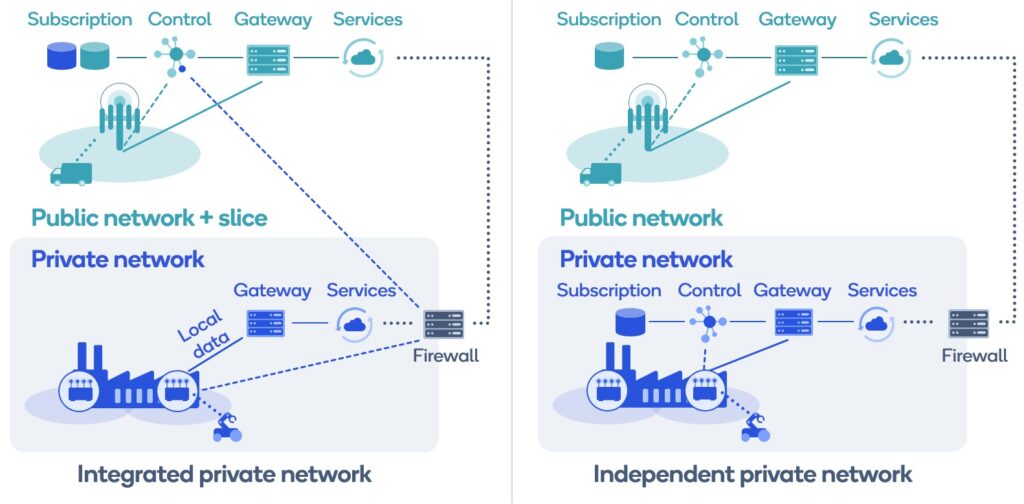Private 5G networks are an example of NPNs
Non-Public Networks (NPNs) are private 5G networks. NPNs can be deployed using shared licensed spectrum via a network operator. NPNs can be deployed as standalone networks as well, either using licensed or unlicensed spectrum, depending on local regulatory approval.
The 3GPP’s definition of Non-Public Network (NPN) was laid out in Release 16, and refined in Release 17.
“A Non-Public Network (NPN) enables deployment of a 5G System for private use,” said 3GPP.
“An NPN may be deployed as:
- “a Stand-alone Non-Public Network (SNPN): operated by an NPN operator and not relying on network functions provided by a [Public Land Mobile Network (PLMN)], or
- “a Public network integrated NPN (PNI-NPN): a non-public network deployed with the support of a PLMN.”
“SNPN RAN broadcasts PLMN ID and NID in the System Broadcast enabling network (re-)selection, overload control, access control and barring are supported using PLMN ID and NID,” said 3GPP.

“In Rel-16, the 3GPP specified support for non-public networks (NPNs), which provide access that is limited to a certain group of users such as the devices belonging to a given factory,” explained Ericsson CTO Erik Ekkuden.
“To provide full support for industrial verticals, the 3GPP specified support for two NPN deployment options. The first, known as public-network-integrated NPNs, allows public operators to support NPNs by associating them directly to their networks. The second deployment option is known as standalone NPN (SNPN). Broadly speaking, an SNPN has the same functionality and characteristics as a regular public network,” wrote Ekudden.
R17 introduces enhancements to SNPN support.
“These enhancements include support for a UE accessing an SNPN using external credentials (such as those from a public network or those belonging to another SNPN), SNPN UE onboarding (to provision the UE with new NPN credentials and/or subscription parameters, for example) and support for emergency services,” Ekudden said.
The growth of private networks
Private 5G networks are expected to fuel industrial and business transformation. Many use cases have been cited for the technology in manufacturing, heavy industries, shipping and logistics, and others already relying on to or tooling production systems around autonomous or robotic equipment. While private 5G networks hold much promise, especially as carriers gear up Standalone (SA) 5G efforts, private 5G network adoption is still in a nascent phase as judged by revenue numbers.
Private LTE and 5G network sales are expected to reach $8.3 billion in sales by 2026, according to Gartner estimates. Rising from $1.7 billion in 2021, Gartner estimates a compound annual growth rate of 35.7 percent over the forecast period. Most carrier revenue comes from LTE, said Gartner, which said most private 5G projects to date have remained either trials or pre-commercial deployments.
“Continued uptake for private LTE and real-world applications of private 5G deployed across the manufacturing, warehousing, and broader industrial sector indicate that while private 5G remains in its infancy from a market size perspective, the appetite, and interest for what it can deliver is very real,” said Gartner.
ABI research analysts took a more general and long-term view of the private network infrastructure market to include revenue from radio access, multi-access edge compute, core, and related services. Their estimates peg the market at $3.7 billion in 2021 with growth expected to reach $109.4 by 2030.
For carriers like

